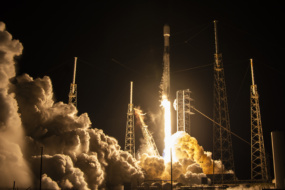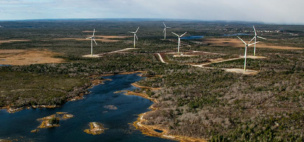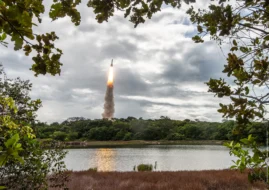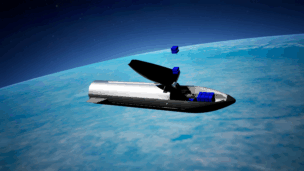After separating from its booster eight minutes into the mission, SpaceX’s Starship was performing an ascent burn 140 km above the planet when flight controllers began losing engine telemetry—and, soon, all communications with the vehicle.
Sixteen minutes after lift-off, SpaceX’s livestream hosts said that the IFT-7 vehicle was lost.
Afterward, SpaceX CEO Elon Musk said the first analysis suggested that the vehicle came apart after an “oxygen/fuel leak…large enough to build pressure in excess of the vent capacity.”
Fallout: Videos on social media from observers in the Caribbean appear to show the vehicle exploding and hundreds of pieces of burning debris, while flight radar showed aircraft changing course in an apparent attempt to avoid the incident. Musk shared one of the videos, seeming to confirm that those are pieces of Starship streaming through Earth’s atmosphere.
V.2 blues: This was the first flight of a new version of Starship that is larger, contains more propellant, and has new fuel feed lines, as well as repositioned forward flaps and new avionics.
The mission also tested a variety of heat shield configurations, ranging from intentionally missing thermal protection tiles to new metal shielding, including one tile with internal cooling.
Any time that many changes come into play for a space vehicle, there’s higher risk of an anomaly.
Silver lining: For just the second time, robotic arms at the launch tower snagged a Starship Super Heavy booster out of mid-air—another proof point toward rapidly reusing the world’s most powerful rocket.
New radar sensors on Mechazilla’s catch arms helped grab the 71-m tall booster, which flew with one previously-used Raptor engine.
Left behind: SpaceX engineers hoped to demo Starship’s ability to deploy satellites using 10 dummy Starlink spacecraft, but the mission ended before that test could begin. Starship is needed to fly larger Starlink satellites, which Musk has said is critical to closing the business case for the broadband internet network.
Now what? SpaceX’s engineers will work to figure out what went wrong, and their conclusions will influence how quickly the FAA okays the company to fly again. “Nothing so far suggests pushing next launch past next month,” Musk wrote.
SpaceX has a lot to do with Starship this year, with executives predicting 25 flights and NASA officials expecting a two-launch cryogenic fuel transfer demo.




